The best hypercars – rated and ranked
Only the fastest, most expensive and ludicrous-looking cars need apply. Find out which we rate the highest

News
by Jack Warrick
7 mins read
11 March 2025
Share
Few experiences are more exciting for a petrolhead than seeing and hearing a rare modern hypercar glide past.
These ultra-exclusive models take out-of-this-world styling and are all about achieving the peak of what’s technologically possible.
Often considered the peak of high-performance art, these exotic, expensive and explosively fast machines deliver the ultimate in driver thrills thanks to some money-no-object, cutting-edge engineering.
Related articles
- Aston Martin reveals Valkyrie LMH racer for Le Mans 2025
- Official: £850k Aston Martin Valhalla to land in summer with 1064bhp
- Aston Martin Valkyrie review
- Aston Martin Valkyrie owners “enjoying” cars despite early software issues – Stroll
- Racing lines: A ride in the Aston Martin Valkyrie
Sitting at the top of the performance car pecking order, the hypercar’s origins are relatively recent. If the Lamborghini Miura was the first supercar back in the 1960s, then the archetypal hypercar was arguably the 2005 Bugatti Veyron, which with its 16 cylinders, four turbochargers and 250mph top speed raised the bar to the next level.
In the two decades since that sensational debut, the number of hypercars has increased almost as quickly as the Veyron accelerated.
From pure-petrol machines to powerful plug-in hybrids and high-energy electric offerings, hypercars use many motive forces to hurl themselves at the horizon as quickly as possible.
But which of the latest hypercars do we like the most? Here are our top 10 performance paragons, each pushing the boundaries of what’s possible in pursuit of performance.
Each one is a high-octane thrill ride that will have no doubt broken the speed odd record as it staked its claim on a place in the automotive hall of fame.
1. Aston Martin Valkyrie
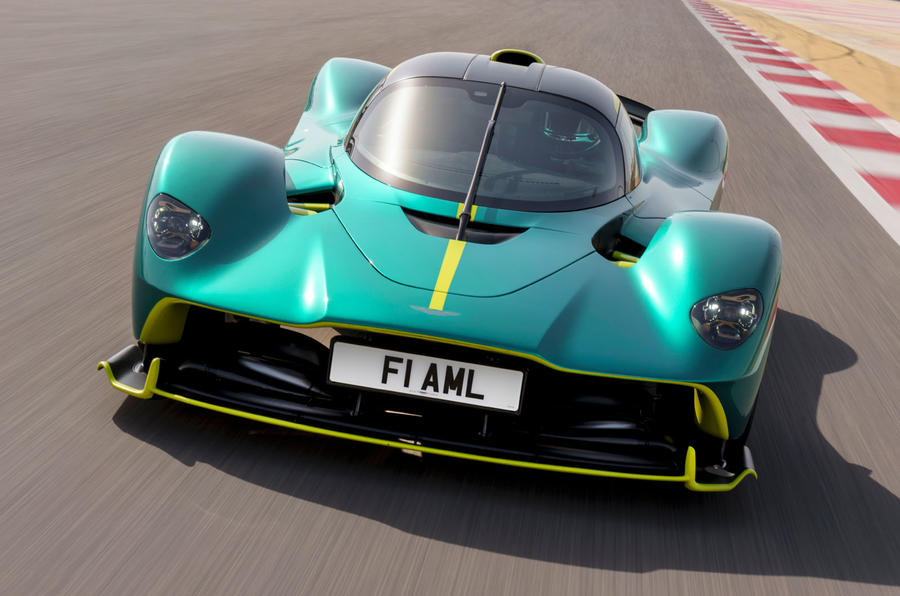
Pros
Scintillating performance
The most extreme factory-built road car ever
Cons
It’s extremely loud inside
Very uncomfortable in harder driving
When it comes to design philosophy, it would be best to describe the Aston Martin Valkyrie as ‘uncompromising’.
The brainchild of then Red Bull Formula 1 technical director and all-round aerodynamic genius Adrian Newey, the jaw-dropping British machine has been created to deliver the ultimate in outright performance, with nothing coming between it and its goal of smashing lap times.
Despite wearing numberplates, headlights and indicators, the Valkyrie is a purebred racer that you just so happen to be able to put in for an MOT test.
Its lightweight carbonfibre tub was designed with strength in mind, while the knee-high body’s surfaces were sculpted by wind-tunnel data and feature adaptive aerodynamic surfaces.
The suspension is equally trick, its active adjustable ride height aiming to keep the car on an even keel as aero and cornering forces build.
Yet arguably the highlight is the naturally aspirated (but very mildly electrically assisted) 6.5-litre V12 that revs to a heady 11,000rpm and delivers a knockout 1140bhp punch for 0-62mph in 2.5sec and a 220mph top speed.
Inside the stripped-out cockpit, there’s barely enough room for the driver, despite the two-seat billing, while noise-cancelling headphones are required to protect against the ear-splitting howl of that Cosworth-built engine.
Sensory overload is guaranteed, and if you’re brave enough few cars are quicker around a circuit. Yes, the active suspension strips away some vital feedback and the standard Michelin rubber isn’t quite up to the incredible forces the Valkyrie can generate, but as a visceral automotive experience, few come close.
Read our Aston Martin Valkyrie review
Read our Aston Martin Valkyrie review
Finance this car with Drivenfi
Latest Reviews

Mercedes-AMG CLE 53
8

Volkswagen Tiguan
7

Honda Civic Type R
9

Used BMW 3 Series Touring 2012-2019 review
9
Used BMW 3 Series Touring 2012-2019 review

Aston Martin Vantage Roadster
Read our review
Car review

Aston Martin Valkyrie
1140bhp, £2.5m, eight years in the making. We finally take the wheel of Adrian Newey’s masterpiece
Back to top
2. GMA T50
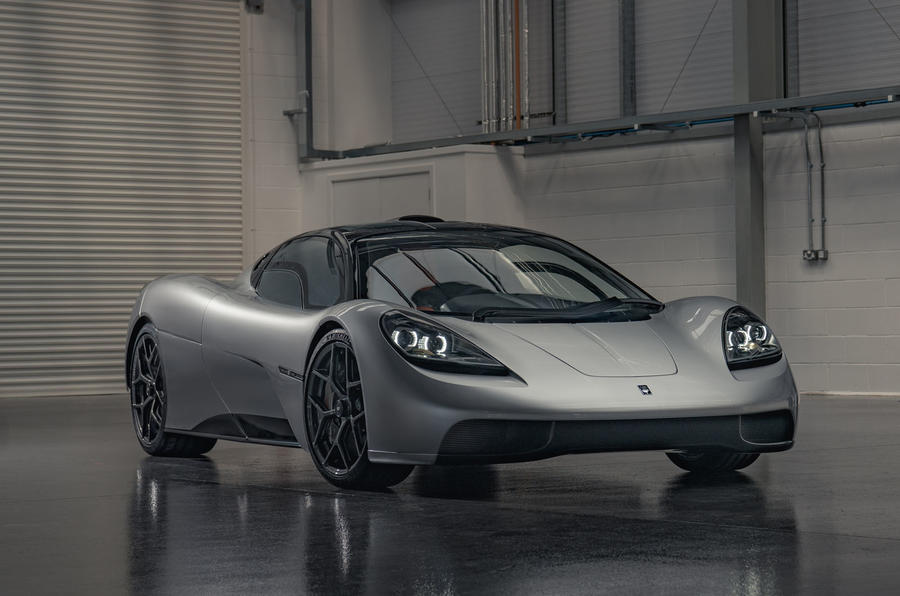
Pros
Cosworth V12
Central driving position
Cons
Only 100 will be built
Could be more practical
Gordon Murray, designer of the celebrated 1992 McLaren F1, has brought the world his own take on a modern successor to that masterpiece – and the GMA T50 is a hypercar the car-loving world may be preoccupied with for several reasons.
It shuns electric motors and uses instead a naturally aspirated 4.0-litre V12 engine that revs beyond 12,000rpm and produces 650bhp.
It follows the principles that made the F1 so special: rigorous lightweight design, advanced engineering and compactness.
Like the F1, it has a central driving position and a three-seat cabin.
And lastly, it uses ‘fan car’ active aerodynamics like no other production car there has ever been.
Finance this car with Drivenfi
3. Mercedes-AMG One
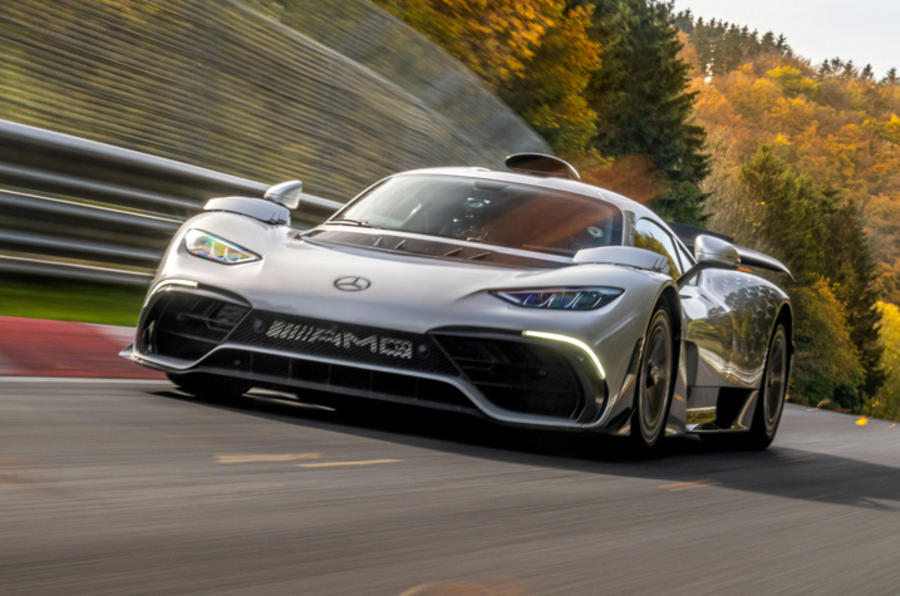
Pros
Game-changing technology
The fastest AMG ever built
Cons
They’re all sold
Not the most exciting engine noise
The Mercedes-AMG One is a hardcore yet elegant coupé with a genuine Formula 1 powertrain: a 1.6-litre V6 and four electric motors combining for a total output of 1049bhp.
Engineered in part in the UK by powertrain specialists from the Mercedes F1 team, it’s the fastest Mercedes production car ever, overtaking the 214mph Mercedes-Benz CLK GTR that went on sale 25 years ago.
It follows the famous Mercedes-Benz SLR McLaren, which was also built in the UK, by McLaren in Woking, between 2003 and 2009.
Power stands at 566bhp at 9000rpm – 2000rpm shy of the redline – while top speed stands at 219mph. It will hit 0-62mph in 2.9sec.
Its technology is really rather staggering. Two of its motors are positioned between the turbocharger and the electric compressor, while the other two are integrated into the front axle.
Want one? Unfortunately, all 275 cars have been sold for £2.2 million apiece.
Read more about the Mercedes-AMG One
Finance this car with Drivenfi
Back to top
4. Bugatti Tourbillon
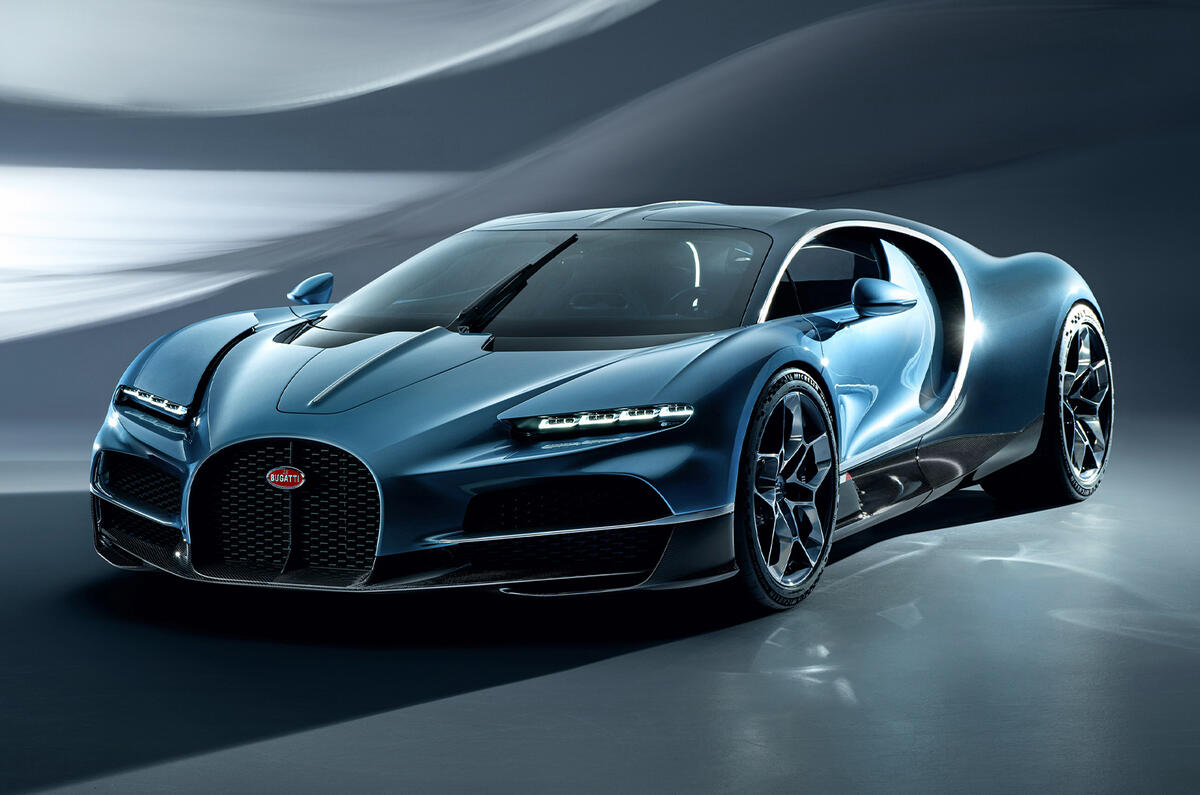
Pros
One of the fastest cars ever made
Phenomenal power
Cons
You might never see one…
…let alone own one
The Bugatti Tourbillon arrived some 20 years after the Veyron, the car that well and truly changed the game for hypercars.
On paper, some of the £3.2 million Tourbillon’s figures are almost unbelievable. Powered by a plug-in hybrid system centred on a behemoth 8.3-litre V16, total output stands at 1775bhp. Bugatti claims a staggering 0-62mph sprint of 2.0sec and a preliminary top speed of 267mph. Oh, and it will do 0-124mph faster than the Volkswagen Golf GTI can reach 62mph.
Because it’s a PHEV with a 25kWh battery, it can also travel up to 37 miles on electric power alone.
Just 250 will be made.
Read more about the Bugatti Tourbillon
Finance this car with Drivenfi
5. McLaren W1

Pros
Introduces a new engine
Clever aerodynamics
Cons
All cars have sold
Production won’t start until 2026
The McLaren W1 is a record breaker for the Woking-based firm. It’s McLaren’s fastest and most powerful model yet.
It employs a sublime-sounding engine and smart aerodynamics technology, along with a forensic approach to weight-saving, meaning it tips the scales at just 1399kg.
Beneath the metal sits a 4.0-litre twin-turbocharged V8 engine with hybrid technology, engineered in-house from the ground up. Alone, it produces 915bhp.
It also uses a 342bhp electric motor using technology derived from Formula E race cars. Total power stands at 1258bhp and it can hit 0-62mph in 2.7sec.
Read more about the McLaren W1
Finance this car with Drivenfi
Back to top
6. Ferarri F80
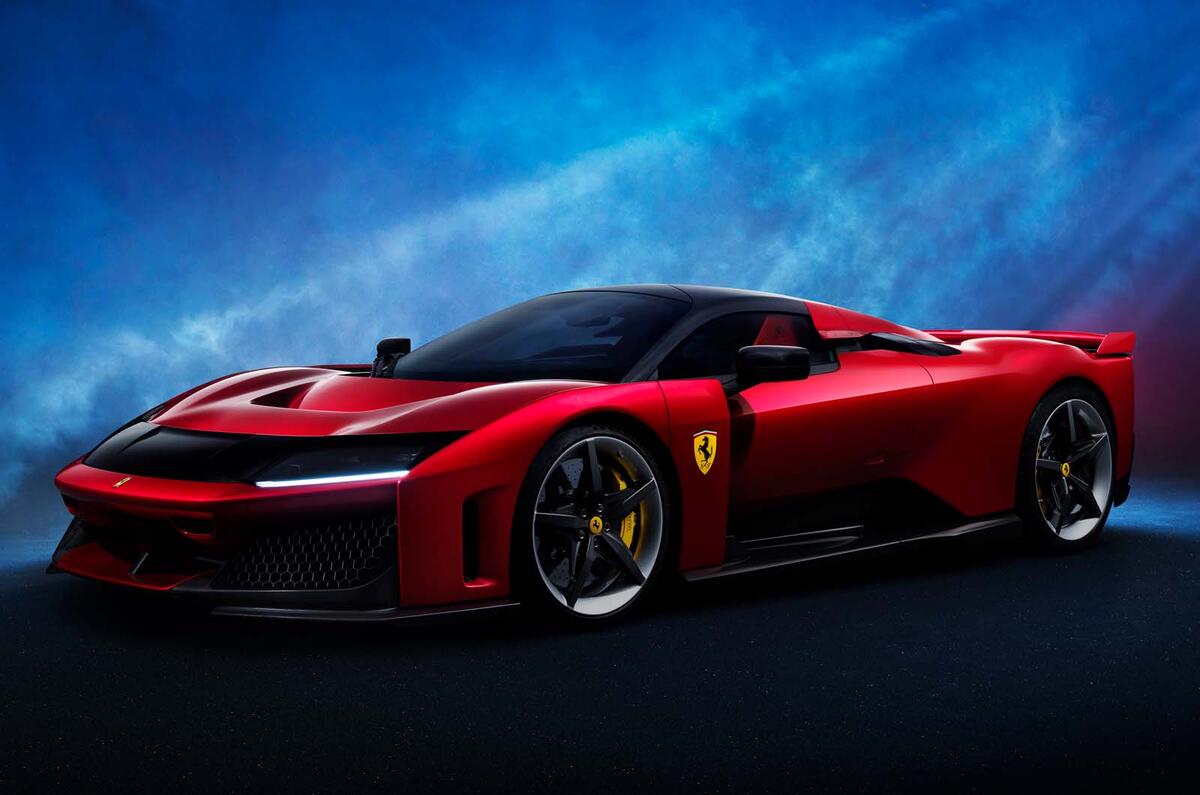
Pros
Modern technology derived from Formula 1
Faster than the McLaren W1 and Mercedes-AMG One
Cons
Styling isn’t typically beautiful like previous Ferraris’
No pure-electric driving mode
The LaFerrari is no more, but Ferrari has plugged the gap with the new F80 hypercar.
Like the W1 is for McLaren, the F80 is Ferrari’s most powerful road car yet, powered by a hybridised twin-turbocharged V6 engine capable of revving up to 9200rpm.
While the engine takes parts from the Italian firm’s 499P Le Mans race car to produce 888bhp on its own, two electric motors work together to pump out an additional 280bhp, lifting total output to 1184bhp.
Naturally, the F80 is incredibly fast. It launches from 0-62mph in 2.15sec and from 0-124mph in 5.75sec. Whisper it, but that’s faster than the Mercedes-AMG One and McLaren W1.
Read more about the Ferrari F80
Finance this car with Drivenfi
7. Pagani Utopia
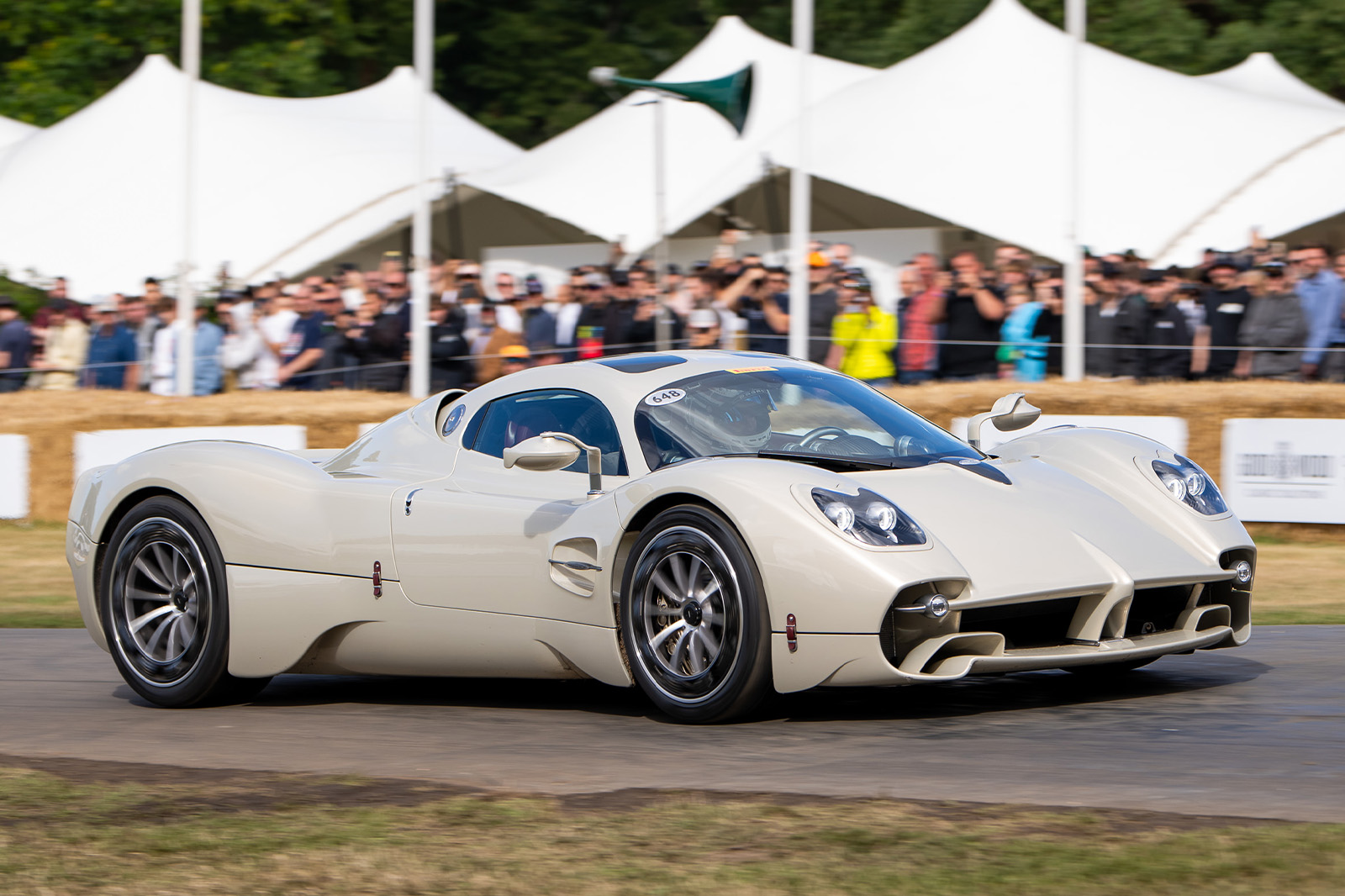
Pros
Sublime engine-and-gearbox combination
Light weight
Cons
They’re all sold out
Costs £2.2 million
On paper, the Pagani Utopia has all the hallmarks of an all-time great.
It’s powered by a 6.0-litre naturally aspirated V12 engine sourced from Mercedes-AMG, pumping out 864bhp and 809lb ft, which is 58bhp more than the most powerful variant of its predecessor, the Huayra.
All that power is managed by a seven-speed manual gearbox. All that and it weighs just 1280kg – only 100kg or so more than the Mazda MX-5.
Its interior is typically glamorous, with quality analogue dials, milled switches and ergonomics, plus a modern steering wheel milled from one solid aluminium block.
This Italian coupé is a dream car for many, but as with all of the best hypercars, there’s a catch: Like all Paganis, it’s ultra-exclusive. Just 99 examples will be built, and all of them have already been sold. But there are still convertible and track-only variants to come…
Read more about the Pagani Utopia
Finance this car with Drivenfi
Back to top
8. Rimac Nevera
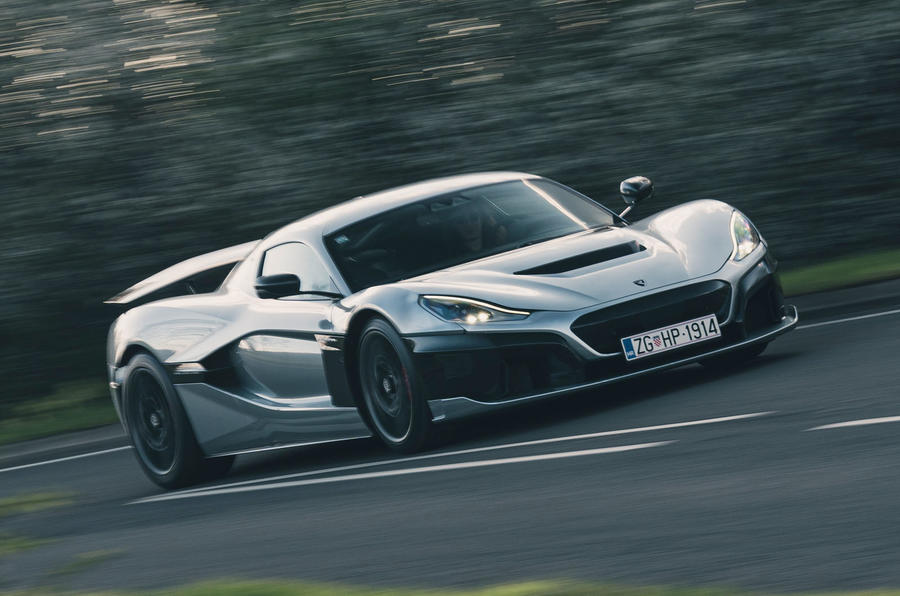
Pros
One of the fastest cars on the planet
Startling performance
Cons
Costs £2.4 million
No exciting engine noise
The crowning achievement of Croatia’s young Rimac empire is the Nevera, which is the follow-up to the Concept One and the production version of the C_Two concept.
The former arguably kick-started the electric hypercar trend with its 1073bhp output and £670,000 asking price when it debuted in 2017.
Only 150 examples of the Nevera will be made, and its appeal has only been enhanced by many by its recent record-breaking EV top-speed run, when it topped 256mph.
The car is built around a composite tub, and there’s an electric motor for each wheel, with independent single-speed gearboxes at the front and two two-speed dual-clutch gearboxes for the back axle.
All this means the Nevera boasts 1888bhp and a mountainous 1696lb ft, which allows it to hit 0-62mph in just 1.95sec with a top speed of 258bhp. Its 120kWh battery also allows for up to 340 miles of range.
If you’re after something that feels slightly more upmarket, the Pininfarina Battista uses a rolling chassis co-developed with Rimac and is the Nevera’s more luxurious cousin.
Finance this car with Drivenfi
9. Lotus Evija
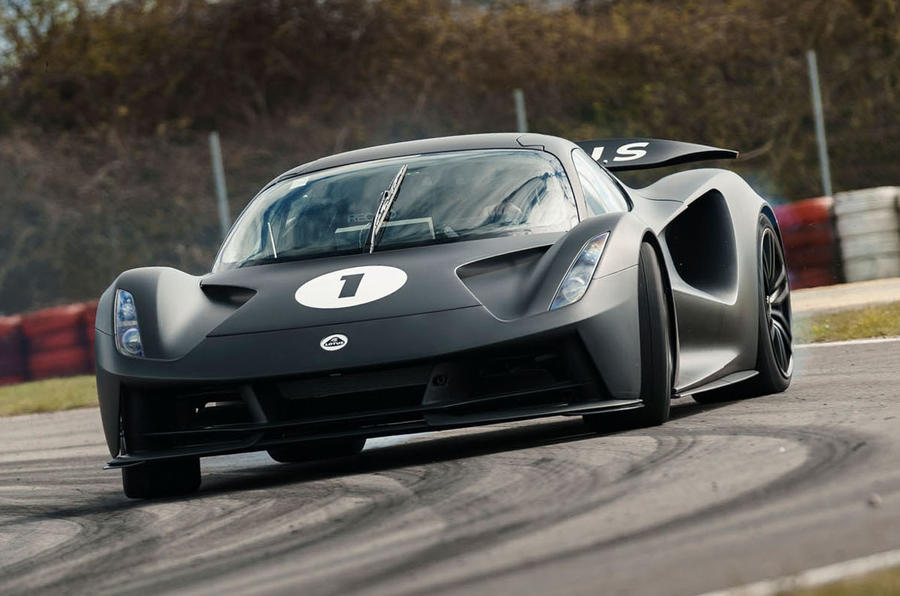
Pros
Lighter than most other electric hypercars
Incredible performance
Cons
Limited range
No exciting engine noise
If you were in any doubt about which way the high-performance wind was blowing, then the appearance of two EVs in our hypercar top 10 should leave you in no doubt.
We love high-revving, noisy, fast and dramatic combustion-engined machines, but the appeal of instant, walloping, vectored-per-corner torque isn’t hard to deny – and the Lotus Evija serves that up in spades.
So far we’ve driven the Norfolk firm’s fast flagship only in prototype form around Lotus’s own test track at Hethel, but the initial impressions were promising.
Electric or not, this car’s key vital statistics leave nothing to chance. Its 70kWh battery and a quartet of electric motors make it weigh some 1700kg, but it also develops some 2000 metric horsepower at peak, runs on Pirelli P-Zero Trofeo R tyres and is claimed to be capable of 0-186mph in just 9sec.
Our prototype drive revealed a car that struggles to feel dramatic when launching from low speeds but one that piles on speed beyond three-figures with an unrelenting potency and whose handling feels as balanced and poised as you would expect of a Lotus, despite its four-wheel-drive layout.
Read our track drive of the prototype Lotus Evija
Finance this car with Drivenfi
Back to top
10. Czinger 21C

Pros
Fastest production car ever to fly up the Goodwood hill
Fascinating 3D-printed production process
Cons
Passenger sits behind rather than beside the driver
Costs around £2.1 million
The Czinger 21C is slightly different to the other cars on this list, in that it’s produced in a rather unconventional way: through 3D printing.
That doesn’t mean it’s slow, though. It takes a 2.9-litre twin-turbocharged V8 engine and dual electric motors to produce an eyewatering 1332bhp.
Czinger claims a 0-62mph sprint of a scarcely believable 1.9sec, but the stats don’t end there. The 21C is also the fastest production car ever to have climbed the Goodwood hill: 1.16 miles in just 48.82sec.
It also shattered the production car lap record at both the Circuit of the Americas and Laguna Seca.




